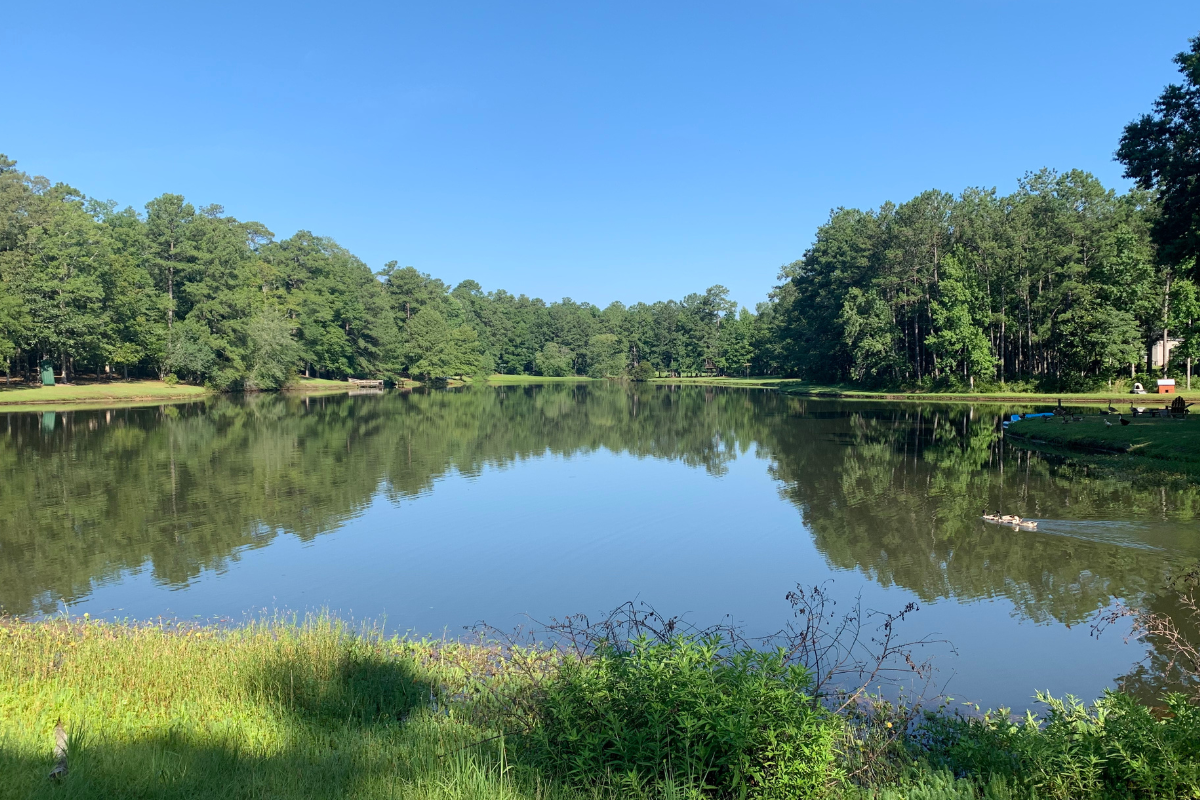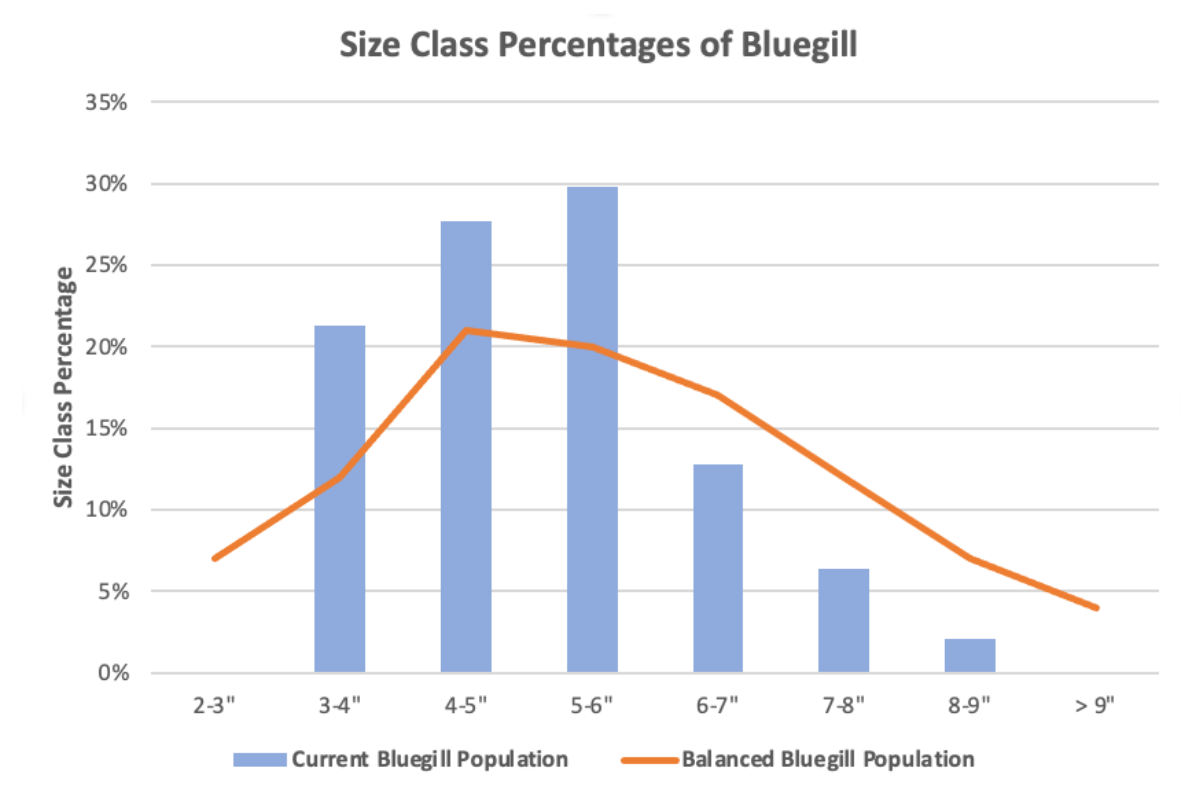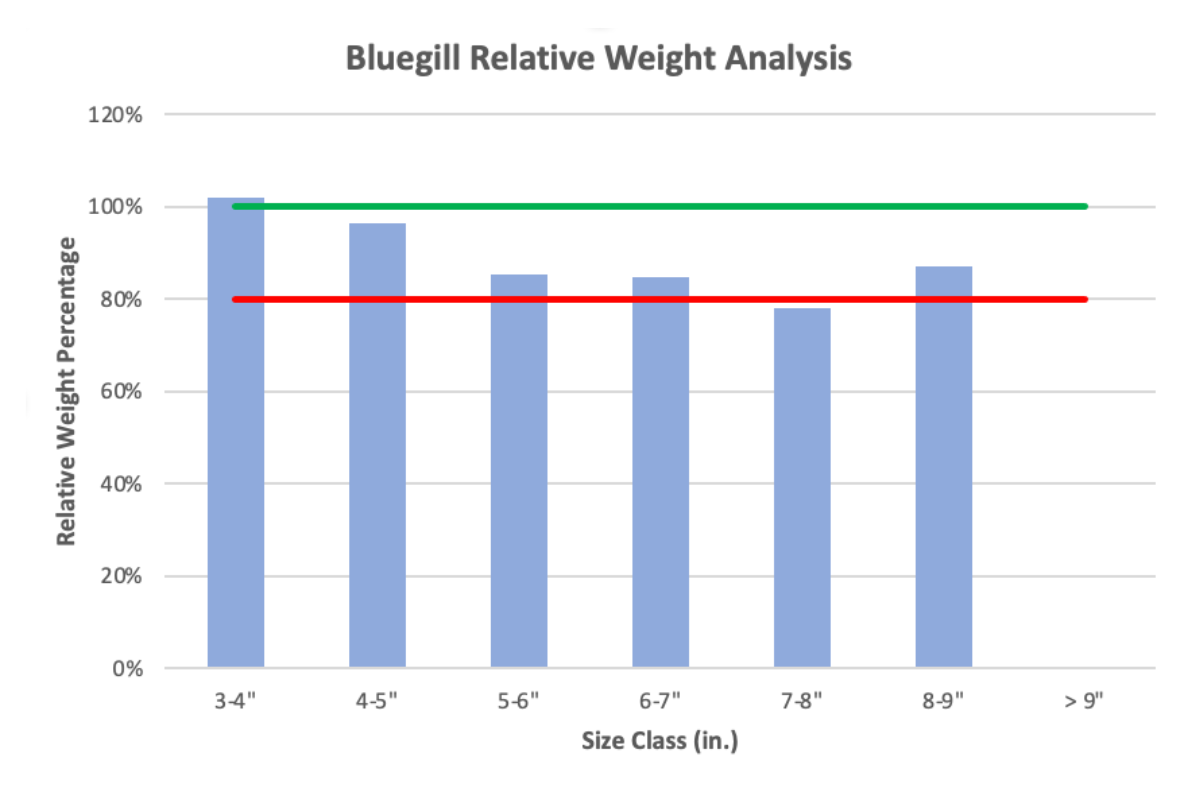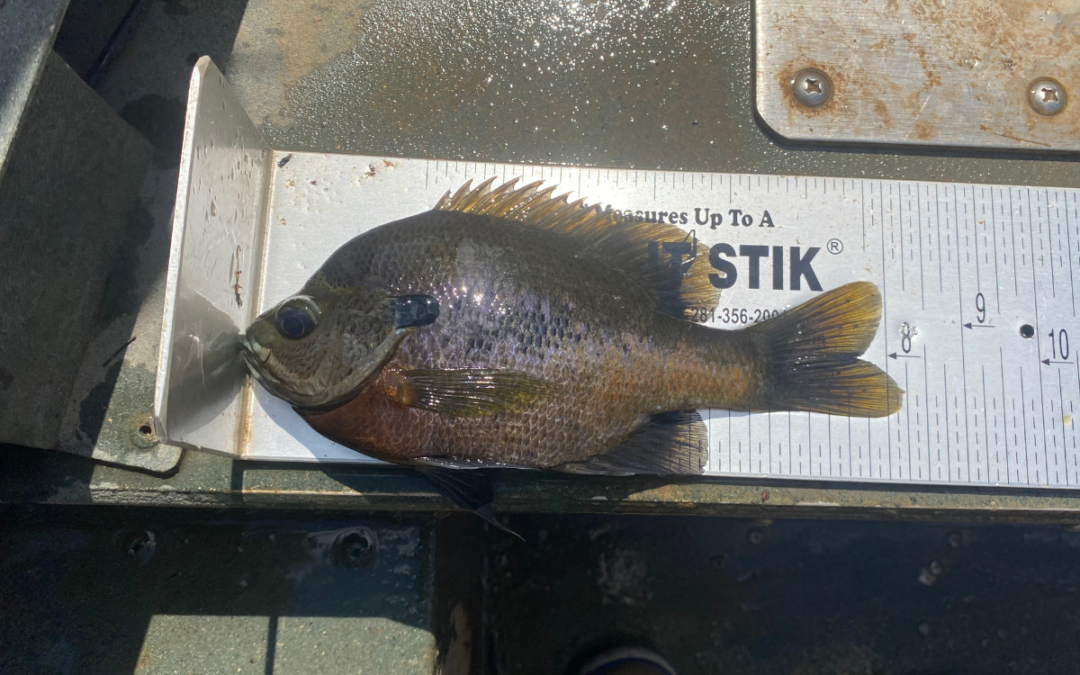As we’ve mentioned in previous blogs, bluegill are the most important prey for largemouth bass in the ponds we manage across south Georgia and north Florida. Bluegill will spawn multiple times and a year and are the preferred food for largemouth bass. As such, maintaining a healthy bluegill population is integral to sustaining a trophy largemouth bass fishery. In this blog we’ll provide a case study on bluegill weight and size distribution in an 8 acre pond in south Georgia.
We performed an electrofishing population survey on this pond in June 2022 and collected bluegill and largemouth bass for analysis. This edges of the pond had a light amount of vegetation that included smartweed, alligator weed, slender spikerush, chara, and parrotfeather. The vegetation was not above the 20% pond cover threshold.
Besides the minimal vegetation around the pond bank, there was not much structure or cover in this pond. Structure is important because it provides refuge for bluegill and ambush habitat for largemouth bass. As we’ll show with the figures below, the lack of structure is likely causing some issues with the bluegill weight in this pond.

Bluegill Size Class Percentages
We collected 168 bluegill during the 45 mins that the electrofishing survey was conducted. This gave us a fish/hour number of 224, which is well over the 100 fish/hour baseline that we like to see with bluegill. We knew that there was a substantial bluegill population in this pond, but that doesn’t always mean that the population is healthy and balanced.
After measuring each fish, we divide them into size classes as shown in the figure below. The orange line indicates what a balanced bluegill population should look like, while the blue bars show the data from this pond. As you can see in this figure, the bluegill population does follow the ideal curve. However, there was an overabundance of bluegill in the 3-6″ size classes.
Ideally, we’d like to see fewer individuals in the 3-6″ size classes and more individuals in the larger size classes. This data indicates that there is an issue that is preventing a majority of the smaller bluegill from growing into a larger size class. This could be a result of the lack of cover and refuge habitat in the pond, as indicated earlier.

Bluegill Weight Analysis
After plotting the bluegill size class distribution, we look at the bluegill weight based on a standard weight table for bluegill. This figure helps us to understand how the bluegill weight in this pond compares to the standard weight for each size class. If certain size classes are under the green (healthy) line, there is cause for concern.
As you can see in the figure below, the 3-5″ bluegill were above or close to the standard bluegill weight for those size classes. However, all the other size classes were underweight. We needed to determine why the bluegill weight in the larger size classes was underwhelming and what we could do to fix the problem.

How Do We Solve This Issue?
When bluegill weight is substandard, the first thing we consider is the water clarity and plankton abundance. A pond with clear water will almost always have an issue with bluegill weight. Clear water is not fertile and does not support plankton blooms, which are an essential part of the bluegill diet.
This pond had a visibility of greater than 42″ compared to the ideal visibility depth of 18-28″. The lack of plankton and the lack of refuge habitat were certainly reasons for the bluegill weight being lower than it should in the larger size classes.
In most cases we would recommend fertilization to reduce water clarity and improve plankton populations. But this pond does receive a significant amount of fertilizer runoff from rainfall. However, we surveyed this pond during a relatively long dry period and thus the water wasn’t very fertile at the time.
We did recommend adding more structure in the pond to provide a refuge for bluegill. This can be done with Christmas trees, brush piles, in addition to creating artificial habitat structures. We also recommended adding 3 large fish feeders along the bank of the pond. Feeding these bluegill a high quality fish food will certainly improve the insufficient bluegill weight that we saw during the survey.
Let Up Help Improve Your Pond!
If you’re in the south GA or north FL areas and would like a population survey on your pond or lake, complete this form and we’ll contact you to schedule a time to meet. We look forward to turning your pond into a productive fishery for years to come!

